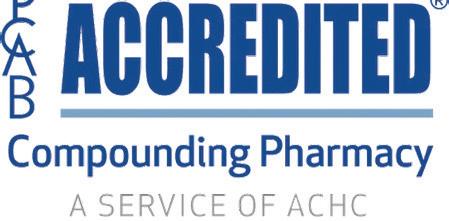





By Kate A. Miner Marketing Correspondent
In the shadow of the Cascade Mountains, a healthcare revolution is quietly unfolding. The Inland Northwest is experiencing a surge in healthcare career opportunities, driven by technological advancements, demographic shifts, and innovative educational programs. This growth is reshaping the healthcare landscape, creating new opportunities and challenges for both job seekers and healthcare providers.


"The Healthcare and Social Assistance sector is by far the fastest growing industry in Spokane County," reports the Spokane Workforce Council. "In just the past five years, nearly 4,000 healthcare and social assistance related jobs have been created locally, and strong
continued new job growth is forecast for the sector."
This expansion is not just about numbers; it's about meeting the evolving health needs of a growing and diverse population. As the Baby Boomer generation ages and demands for medical services increase, Spokane's healthcare industry is poised for further growth.
Spokane's transition into a major medical education hub has been a game-changer. The city is now home to two separate medical schools: Washington State University's Elson S. Floyd College of Medicine on the Riverpoint campus, and a University of Washington-Gonzaga University joint venture.
Dr. John Tomkowiak, founding dean of the Elson S. Floyd College of Medicine,


































































































For 140 years, we’ve been partnering locally to support communities in the ways they need it most. Because healthy communities need more than health care.





































emphasizes the impact: "Our presence here is not just about educating future doctors. It's about creating a healthcare ecosystem that attracts talent, spurs innovation, and ultimately improves patient care across the region."
This educational expansion is already bearing fruit. Local healthcare systems report an uptick in residency applications and a growing pool of locally-trained physicians eager to serve the community. The ripple effect extends beyond doctors, creating opportunities for a wide range of healthcare professionals, from nurses to medical technicians.
Despite the influx of new medical graduates, the nursing shortage remains a critical issue. Providence, the region's largest healthcare provider, is taking innovative steps to address this challenge.
"We've launched several initiatives to attract and retain nurses," explains Susan Stacey, Providence Chief Executive for the Inland Northwest. "Our 'earn-whileyou-learn' programs allow aspiring nurses to gain hands-on experience while completing their education. We've also expanded our partnerships with local
times a week, and includes an ESL instructor to help students learn medical terminology. Amanda Palmer, a student from Jamaica, shares her experience. "It was nerve-wracking at the beginning, but once I started working with the team, they made sure we understood the words and terminology. We really like the program and recommend it to anyone."
The inaugural class includes students from diverse backgrounds, including Jamaica, Congo, Ukraine, Kenya, Botswana, Afghanistan, and Egypt. Many were caregivers before coming to the U.S., including two nurses and a doctor in their home countries.
MultiCare, another major healthcare provider in the region, is also expanding its workforce and training programs. With more than 22,000 employees, including nearly 4,000 registered nurses and over 1,000 employed physicians and advanced practice providers, MultiCare offers a wide range of career opportunities.
only attracts the best clinicians and support staff to our facility but helps us retain employees who build lasting relationships with our patients and families."
Shriners Children's Spokane is also adapting to the changing healthcare landscape. "This is an exciting time for healthcare in the Spokane region," Harding notes. "We are fortunate to have the advantage of two medical schools which link us to the providers of tomorrow. It will be through developing partnerships and providing hands-on learning opportunities that we can expose these students to our facility's inclusive and close-knit family culture and show them the diverse opportunities available in our broader community."
The integration of technology into healthcare is creating new roles and transforming existing ones. Telehealth, artificial intelligence, and advanced diagnostic tools are at the forefront of this change.
schools to create a robust pipeline of nursing talent."
One such program is the Certified Nursing Assistant (CNA) Training Program at Providence Sacred Heart Medical Center. This six-week program combines classroom education with clinical training, providing a fast track into healthcare careers. "We train about 110+ CNAs each year," Stacey notes. "Most of these students go on to pursue 2-and 4-year nursing degrees, further strengthening our local healthcare workforce."
Providence is leading the way with new and innovative programs in the Spokane area. A standout initiative is the Certified Nursing Assistant Training Program for Refugees, launched in partnership with the Spokane Workforce Council. Emily Fleury, Director of Health Training and Community Wellness at Providence, explains the program's significance: "We wanted to do this for a long time. It's important to look beyond traditional candidates and create work opportunities for those who may have been great caregivers in their former countries."
The program runs for 11 weeks, three
"At MultiCare, we want our employees to experience growth and success for a long and fulfilled career with us," says a spokesperson for the organization. They offer various professional growth opportunities, including tuition assistance, paid clinical training programs, residencies, and clinical rotations.
MultiCare University collaborates with teams across the organization to deliver educational excellence in areas such as nursing professional development, nurse residency, leadership development, and evidence-based practice.
While larger healthcare systems expand across various specialties, some organizations are carving out niches that attract specialized talent. Shriners Children's Spokane is one such institution, focusing on pediatric care and leveraging its unique mission to attract healthcare professionals.
Janell Harding, NW Market Director of Human Resources at Shriners Children's Spokane, explains their approach: "Specializing in such a niche gives us the ability to target professionals who specialize in pediatrics. Our mission drives everything we do, and this not
Both Providence and MultiCare have invested heavily in telehealth services, especially since 2020. These advancements are creating demand for roles that blend healthcare knowledge with tech savvy. Data analysts, health informatics specialists, and telehealth coordinators are increasingly sought after.
As the Inland Northwest continues to evolve as a healthcare hub, the career landscape is set to become even more diverse. From high-tech roles in robotic surgery to community health workers focused on preventive care, the opportunities are expanding.
For those considering a career in healthcare, the Inland Northwest offers a unique blend of opportunity, innovation, and community impact. Whether you're a recent graduate, a career changer, or a newcomer to the country, Spokane and its surrounding areas are emerging as a dynamic and rewarding place to build a healthcare career.
Photos courtesy Providence One of the innovative training programs is Providence’s Certified Nursing Assistant Training Program for Refugees, launched in partnership with the Spokane Workforce Council.

Suzanne Mulvey, Clinical Pharmacist, Southgate Clinic, CHAS Health
How long have you worked here?
18 years
What do you like most about what you do?
My role has evolved. I started as a staff pharmacist, where I developed a strong foundation in patient care. Eventually, I transitioned into a clinical pharmacist role, which has allowed me to make a larger impact on patient outcomes.
Why did you want to work in health care?
We work extremely hard to meet each patient where they are at, considering factors such as their insurance or what medications are affordable on our sliding fee scale. I listen to understand past experiences, side effects, and any concerns. My role involves checking for drug interactions, ordering labs, ensuring safe dosages, and working towards meeting quality care measures. I also coordinate with other members of our healthcare team. My job satisfaction is highest when I successfully navigate these complexities and help patients achieve better health through medication or lifestyle changes, and most importantly get them feeling better.

What’s something you wish people could know more about your profession?
Healthcare, and pharmacy in particular, requires continuous learning and adaptability. With new research constantly emerging and more medications being approved, staying current is essential. CHAS Health supports ongoing education and provides access to reliable drug information systems, enabling us to perform our duties effectively. The camaraderie and communication among healthcare professionals at CHAS has been integral to my success, and I’ve developed lifelong friendships and found inspiration in the robust skills and knowledge of my colleagues.
patients on their own turf.
Nurse-Family Partnership is actively enrolling expectant parents and could use your help with referrals. Have a good candidate who could use a little help being the best parent they can be? Great! Let us know before they’re 28 weeks pregnant!

Todd M Smith, Advanced Registered Nurse Practitioner, Clinical Program Director, CHAS Health Nurse Practitioner Residency Program
access to quality health and wellness services resonates with me.
What do you like most about what you do?
How long have you worked here?
9 years
What do you like about where you work?
First would be my patients. Second is the fantastic team I work with including our program coordinator, clinical preceptors, medical assistants, and operational leaders. Third, I enjoy being a part of clinical leadership at CHAS Health. Having the opportunity to weigh in on decisions that impact patients, the delivery of care, and advocating for my colleagues has been gratifying. Finally, the mission of CHAS Health which is to improve the overall health of the community while expanding
The different hats I get to wear. I see patients as part of my regular clinic work, but I am also responsible for developing the clinical curriculum for the Nurse Practitioner Residency Program as well as precepting and mentoring these same residents. Having the opportunity to work alongside new graduate NPs, watching them grow both personally and professionally while developing the skills and knowledge to provide high-quality care and be successful in their clinical practice is very fulfilling. This work and my role really demand that I stay up to date with my own clinical knowledge and skills which is fantastic as I love to keep learning and refining my own practice. Finally, residency and fellowship programs for Advanced Practice Providers such as NPs and PAs are relatively new and it has been great to be a part of the national movement.

Dr. Cicely White,
Medical Director of Pediatrics, Kaiser Permanente
How long have you worked here?
Since 2009
What do you like about where you work?
I joined Kaiser Permanente because its mission and values resonate with my own. I prioritize taking time with each patient to cultivate long-term, trusting relationships with families. Kaiser Permanente supports this approach by emphasizing quality of care over quick patient turnover, aligning perfectly with my commitment to meaningful connections and exceptional care.
Where did you study?
I completed my undergraduate studies

at Texas A&M and went on to attend medical school at the University of Texas. I completed my residency at Children’s Hospital of Michigan. From 2005 to 2009, I served as an active-duty Air Force physician, stationed at Fairchild Air Force Base.
What do you love about what you do?
Building relationships with families and contributing to their lifelong wellness and healthcare. I am thankful for the education I received and now have the chance to contribute to the future of our profession.
I enjoy serving as a faculty member at the University of Washington, Washington State University, and Kaiser Permanente School of Medicine in Pasadena because I can educate and mentor future physicians.
What’s something you wish people could know more about your profession?
My role extends beyond just caring for the child; it involves working with the entire family. Sometimes, parents who may not have their own doctor bring their child in for visits, so I provide them with health and wellness advice.


By Tracy Damon Marketing Correspondent
Originally created for entertainment, video games and virtual reality are getting serious. They’re just a few of the new tools and technology that are changing the way the healthcare industry does things. “We use VR in our clinic for pain control for fractures, for helping kids get through their IV sticks and other things,” Kristin Monasmith, Marketing and Communications Director for Shriners Children’s Spokane, wrote in an email. “(Shriners) Clinical and recreational therapy staff have been using VR since 2019.”
For Shriner’s purposes, VR is used as a distraction during painful or scary procedures for children. The patient is set up with VR goggles and helped to choose an “experience” to par-ticipate in, like an African safari or underwater scuba diving. The diversion works so well that sometimes painkillers aren’t even required.
“In some instances, just VR,” said Monasmith. “If we are removing pins (or other implants), that would be surgery, so definitely not only VR. But setting a break so that it can be casted, they have used (just) VR successfully.”
The use of VR appears to still be in its’
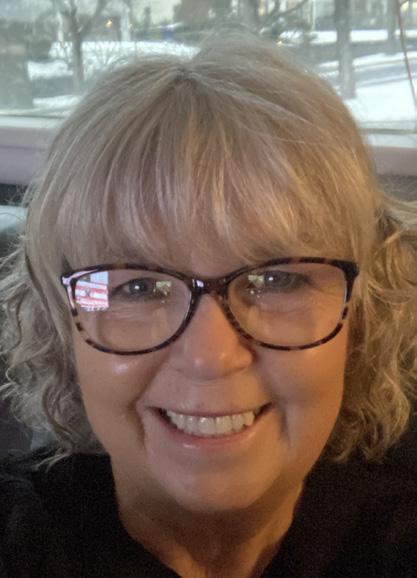
Cindy Norton, LPN/ CFCS (Certified Foot Care Specialist), Kaiser Permanente
How long have you worked here?
Almost 12 years, mostly in Podiatry and Foot Care since 2021.
What do you like about where you work?
I work with amazing coworkers and doctors, and I love what I do, which makes coming to work enjoyable. The Kaiser Permanente Riverfront Medical Center has everything patients need under one roof.
How long have you worked in healthcare? 17 years.
Where did you study?
I studied at Eastern Suffolk BOCES School of Practical Nursing on Long Island, N.Y., and graduated in 2007. I earned my foot care certification at Rainier Medical
Education Programs in Issaquah, and in 2021, I created the Foot Care program for Kaiser Permanente in Washington.
What do you like most about what you do?
I love making a difference in people’s lives. Patients are grateful for what I do, and their appreciation is the most rewarding part of my job.
Why did you want to work in healthcare?
I’ve always been a caretaker at heart. My father once told me I was like a mother hen when I cared for him. When the opportunity arose to return to school and pursue nursing, I knew it was the right path.
What’s something you wish people knew more about your profession?
Foot care is crucial but often overlooked. It goes beyond a simple pedicure: we check for sores, calluses, swelling, and other issues a regular pedicure might miss.
Anything else you want readers to know?
If you’re diabetic, have peripheral vascular disease, neuropathy, or any other medical conditions affecting your feet, pay close attention to your feet.

Amanda Pringle, RN, BSN, CCRN, TCRN, Trauma Program Manager, Kootenai Health
What do you like most about what you do?
I love the dynamic nature of my work and the teamwork needed to be successful.
Every day looks different; one moment I can be at the bedside assisting a trauma patient, rounding in the Critical Care Unit the next, and the following day providing education to paramedics or coordinating care with surrounding hospitals. One of the most important aspects is to be proud of the care we provide. People don’t start their day expecting to be injured, making it that much more important to be ready.
Why did you want to work in healthcare?
After taking an anatomy class in high school, I developed a strong interest in science which led me to enroll in an EMT
course. I fell in love with learning about the body and how to quickly identify the need for intervention.
What’s something you wish people could know more about your profession?
During someone’s most vulnerable time, you are there to support, advocate and guide. It is ever changing and will challenge you in the best ways. As a nurse, you can do many different things from working at the bedside to becoming an IT analyst assisting in building electronic charting systems.
Anything else you want readers to know?
It is important for health care professionals to remember why they chose this work. The shifts and encounters stick with you, and being resilient is essential. The art of caring is at the core of what we do, which includes having the grace to care for ourselves and coworkers.













infancy at Shriners but is definitely making a case for itself.
“I don’t know that I would use the word “common”, but it is something we use when appropriate,” said Monasmith.
Another innovative tool Shriners is using, although not in its Spokane hospital yet, is an interactive video game called Dream. Children become so involved in recovering balloons and diamonds that were stolen by trolls that they are distracted from pain and discomfort from work doctors and nurses are doing.
Video games are also being used to treat ADHD in children. The FDA has approved EndeavorRX, the first prescription video game, which uses sensory stimuli and motor challenges to target areas of the brain that play a role in attention function. The game challenges kids to multitask and ignore distractions
by navigating courses, collecting targets, and avoiding obstacles. An algorithm measures each patients’ performance and customizes the game to that child as they play. In clinical studies, 73 percent of participants reported an increased ability to pay attention after just a month of playing EndeavorRX.
Another healthcare industry trend that isn’t new but is increasing in practices is to release patients the same day as surgery.
“We are definitely seeing a trend toward outpatient surgeries versus inpatient surgeries,” Shriner’s Monasmith said.
This trend increased with COVID and continues to grow. Today, it is estimated that 90% of procedures are elective. During the pandemic, releasing patients following surgery not only freed up beds for more seriously ill patients but kept people who weren’t sick out of
the hospital where they could contract COVID or infections like MRSA.
New technology like wearable monitors makes it less critical for patients to be admitted after surgery. Apple watches and other similar devices let doctors monitor a patient’s vitals from afar and check in via telehealth when needed.
Another technology- 3D printing- is becoming common in the healthcare industry. Shriners does use it, but not yet in a medical capacity.
“The only 3D printing is used with our Rec Therapy for a fun activity for our inpatient kids,” said Monasmith.
Other facilities are using it to print implants, prosthetics, and surgical instruments. This allows those items to be sized and personalized to each patient, which can mean a better outcome and quicker recovery from surgery. It also
reduces costs. The assumption is that someday we will be able to 3D print organs for transplant into humans but experts say that is still 20 to 30 years in the future.
Artificial intelligence is another application that is being used both in entertainment and healthcare. AI has been able to significantly speed up medical transcription and decrease errors made by human transcriptionists in the past.
In particular, ChatGPT is being used effectively by some companies as a chatbot to answer general patient questions, schedule appointments, and provide information about com-mon medical conditions. It is also being used to summarize chart notes, quickly identify trends in patients’ records, and speed up the process of writing medical notes by using simple prompts.

By Kate A. Miner Marketing Correspondent
The United States is grappling with a mental health crisis that has only intensified in recent years. According to the National Alliance on Mental Illness, one in five U.S. adults experiences mental illness each year, while one in 20 adults experiences serious mental illness. The COVID-19 pandemic exacerbated these issues, with rates of anxiety and depression spiking in 2020 and remaining elevated even as life began to return to normal.
Washington State's Struggle
Washington state is no exception to this trend. In 2021, 46.3% of adults in Washington reported symptoms of anxiety or depression, and 30.1% were unable to get counseling or therapy. The state also faces a significant shortage of mental health professionals, with one provider for every 360 people and nearly half of the state's counties lacking a psychiatrist or psychologist.
Inland Northwest: A Beacon of Innovation
In the face of these challenges, the Inland
Northwest region, centered around Spokane, is emerging as a leader in innovative approaches to behavioral health care. Local healthcare providers are expanding services, implementing new programs, and working to address the critical need for mental health support in the community.
MultiCare's Phased Approach
MultiCare is taking a phased approach to building out a comprehensive behavioral healthcare continuum.
Samantha Clark, Assistant Vice President of Strategy & Business Development for the MultiCare Behavioral Health Network, explains, "We are working to accomplish this in phases, first, with our opening of an outpatient behavioral health clinic last year on the Northeast Community Center campus. We have also been growing our integrated models of care within MultiCare Rockwood primary care and pediatric clinics, and now we are opening an inpatient behavioral health unit within MultiCare Deaconess Hospital."
Youth Mental Health: A Priority When it comes to youth, one supportive adult in their lives can make a significant

Brenna McCrummen, MD, Obstetrician and Gynecologist, Kootenai Health
How long have you worked here?
12 years
What do you like about where you work?
When I walk the halls, I know many of the providers, nurses, staff and administrators. It is a small enough hospital to feel connected, and large enough to provide excellent medical care with all the necessary resources. As a physician I enjoy having a voice in how the clinics and hospital care for patients and feel supported in my work.
How long have you worked in health care?
16 years
Where did you study?
I went to medical school in Seattle at the University of Washington and did my residency in Chicago at Advocate Lutheran General Hospital.
What do you like most about what you do?
I enjoy caring for women through all aspects of their lives from teen years and early adulthood, to considering pregnancy or not, to middle age and menopause. All of these times are significant and I get to watch them grow and change. I’m also a busy person and love the variety of getting to do clinic, surgery, deliver babies, and much more!
Why did you want to work in health care?
I’ve always felt that those who can, should advocate for those who sometimes cannot advocate for themselves; I hope I’m doing a good job of that.
What’s something you wish people could know more about your profession?
Women’s health care is such an important part of individual and a family’s life and is about much more than having babies.

difference. The youth in our community need trustworthy people and places that they can turn to if they need help. By integrating behavioral health services into schools and community centers and creating more accessible entry points for youth to seek support. By building these connections, healthcare providers aim to create a safety net that catches young people before they fall into crisis, fostering resilience and promoting long-term mental wellness.
Providence is making significant strides in this area. The organization offers two key programs: the Behavioral and Emotional Skills Training (BEST) program and the Resources, Insight, Support and Empowerment (RISE) program.
The BEST program is particularly noteworthy as a therapist-led, hospital-based day treatment program providing intensive therapeutic treatment for children aged 7-12. Designed for children with behavioral and emotional problems related to past trauma or mental health issues, BEST works to individually meet each child's needs while improving their relationships with family, friends, and school performance. As one of the few youth-based behavioral health programs in the U.S., BEST is often seen as a leader in this area.
MultiCare is also prioritizing youth mental health by strategically increasing access points where young people can find supportive adults and professional help. Clark explains, "MultiCare is integrating behavioral health into pediatric clinics, prioritizing the construction of behavioral health clinics near schools, and developing partnerships with local schools to place behavioral health clinicians directly in educational settings."
This strategy places mental health resources directly in the environments where young people naturally congregate, making support more accessible and less intimidating for those who may be hesitant to seek help in traditional clinical settings.
CHAS Health, a community health center, is leading the way with its Certified Community Behavioral Health Clinic (CCBHC). Jeanne Amaro, VP of Behavioral Health at CHAS, describes their approach: "CHAS Behavioral Health Center, our region's first Certified Community Behavioral Health Clinic, includes patients in the design and delivery of services and provides wrap-around care, regardless of insurance status."



Our team of experienced midwives provides respectful, compassionate, & evidence-based care
prenatal & postpartum care
hospital births with our team of midwives gynecology & contraception annual wellness visits
Complementing BEST is the RISE Program, an intensive outpatient day-treatment program for individuals with mental health disorders such as depression, anxiety, and suicidality. RISE offers separate programs for adolescents ages 13 to 17 and adults 18 and older. The program aims to build skills that help participants live and function well in the community, reducing the need for hospitalization or re-hospitalization due to mental health conditions.
Katie Mooris, Senior Manager of Behavioral Health at Providence, emphasizes the importance of these programs: "I have always had a desire to provide care and support to people who struggle with their mental health and in particular children because they are the most vulnerable.
One of the reasons that makes our community so great is that we have programs like BEST and RISE that focus on supporting a child's and family's physical and emotional wellness so the family as a whole can thrive."
This model of care is particularly important in addressing the needs of underserved populations. Amaro emphasizes, "We have support for the uninsured, available to anyone unable to pay. We won't turn anyone away. We meet patients where they are."
One of the biggest challenges facing the behavioral health field is the shortage of qualified professionals. Healthcare providers in the Inland Northwest are tackling this issue head-on.
Clark from MultiCare notes, "We provide supervision toward licensure so that we can help increase the number of licensed clinicians in Spokane and we employ bachelor-level interns, so that we are helping grow and develop the behavioral health workforce we need."
CHAS Health is also taking innovative approaches to workforce development. Amaro explains, "We help pay for school with a variety of loan forgiveness options.
Our behavioral health wages are fair and competitive."
The focus on youth mental health is a common thread among providers in the region. Providence's RISE program (Resources, Insight, Support and Empowerment) is an intensive outpatient day-treatment program for individuals with mental health disorders. Morris emphasizes the program's goals: "Our goal is to help you learn to better deal with your challenges and thrive."
As the Inland Northwest continues to lead the way in behavioral health care, providers are looking to the future.
Clark from MultiCare envisions further expansion: "While outpatient, integrated and inpatient behavioral health are three critical pillars of a behavioral health continuum, we know that there are other important programs that would benefit this region, and we will work steadfast-ly to bring them to Spokane."
The Spokane area and the broader Inland Northwest region are at the forefront of addressing the mental health crisis. Through innovative programs, expanded services, and a focus on accessibility and youth care, healthcare providers are working tirelessly to meet the growing need for behavioral health services. While challenges remain, particularly in terms of workforce development and meeting the needs of underserved populations, the region's commitment to comprehensive, integrated behavioral health care offers a model for other communities across the nation.

Kanan Silvas, M.D., Regional Medical Director of Virtual Care and Transfer Center, Kootenai Health
How long have you worked in health care?
I graduated medical school in 2015 and residency in 2020. I came back home after residency and began working as a Hospitalist within the COVID unit while doing ER shifts in Orofino. In 2022, I transitioned to splitting my time between Hospitalist shifts and ED shifts here.
What do you like most about what you do?
Every day I get to work on one of the biggest challenges, access to care. The key to good health is getting the right care, at the right place, and the right time. Kootenai Health is a wonderful organization that delivers top-level care, however this means little if the burden of getting to the care is
As the field continues to evolve, the emphasis on education, youth services, and community partnerships will be crucial in ensuring that everyone in the Inland Northwest has access to the mental health support they need. The collaborative efforts of providers like MultiCare, Providence, and CHAS Health are paving the way for a future where mental health care is truly accessible to all.
Dr. Hilda Caquias, Licensed Mental Health Counselor, during an integrated behavioral health ap-pointment at a CHAS primary clinic.
too high. Those who live rurally have little ability to take time off work, difficulty traveling, and are full-time caregivers for children or older family members, unevenly carry this burden. The work we are doing is making major impacts on our community’s health and wellness.
What’s something you wish people could know more about your profession?
Virtual care allows patients to connect with physicians and specialists at a location that is most convenient and affordable to them. While not all care can be 100% virtual, it allows patients to receive care that is more convenient.
Anything else you want readers to know?
The best health care comes from providers that know you and the community you live in. Patients have so many options for tele-providers, however unless they can help care for you in the long term and coordinate the next phase of your care, there likely would be no benefit and only increased cost.


Cass Doyle, Emergency Department, Clinical Assistant Nurse Manager, MultiCare Deaconess Hospital
How long have you worked here?
7.5 years. I made my transition to the ED where I have been for the last 5 years as a charge nurse and scheduler. At the 4-year mark, I made the decision to take the next step and applied to be a clinical assistant nurse manager. I have been growing in this role as well as continuing to charge and schedule for the ED.
What do you like about where you work?
The people I work with. I truly work with the best team. We are like one big family.
How long have you worked in health care?
20 years.
What do you like most about what you do?
I like the fast pace of the ED. You never know what the day will bring.
Why did you want to work in health care?
When I was young, I always wanted to take care of my family when they were sick. At the age of 16, I was given the chance to take a CNA class through high school. That is when I knew I was meant to be a nurse. Taking care of people in their best times and some of their worst times can be challenging and rewarding.
What’s something you wish people could know more about your profession?
We work long hours. We have feelings and deal with some difficult situations with grace and dignity in patients and families who are having some of the scariest moments of their lives.

Dallas Flager, BSN, RN, CEN, Sexual Assault Nurse Examiner, MultiCare Deaconess Hospital and Kootenai Medical Center
How long have you worked here? Six years
What do you like about where you work?
I am appreciative of the opportunity to work in various areas, including our expanding forensic department. The hospital’s size allows me to know many of my colleagues by name, building strong professional relationships.
How long have you worked in health care?
Before becoming a nurse, I was a nursing assistant in a dementia care unit. This invaluable experience showed me how important it is to provide holistic care to every person.
What do you like most about what you do?
It is meaningful to assist people in their healing process and help them overcome unexpected adversity. I consider it a privilege to meet individuals after a traumatic experience and support them in regaining their autonomy, dignity, and hope.
Why did you want to work in health care?
I had a strong desire to understand how the human body functions. Since no one in my family works in healthcare, I became the first nurse.
What’s something you wish people could know more about your profession?
Nursing is a multifaceted and ever-changing profession. You never know what you will encounter daily. I greatly respect nurses, first responders, and anyone in a job dealing directly with the public.
Anything else you want readers to know?
Please be nice to your healthcare workers. We are all doing the best we can. :)


Brittany Thorpe, MS, RD, CSOWM, Registered Dietitian (Weight Loss Specialist), MultiCare Health SystemBariatrics
What do you like about where you work?
I work with an amazing team that truly wants to provide the best care. Our patients are also receptive to information that will improve their health and motivate them to make necessary changes. In helping individuals with their weight loss journey, I get to see what they gain, such as improvements in health, improved mobility, quality of life, etc.
Why did you want to work in health care?
I have always been fascinated by the power of nutrition and wanted to apply this passion into helping individuals. I also
enjoy getting to counsel and connect with patients over months and years.
What’s something you wish people could know more about your profession?
Nutrition is a science, not an opinion. There are false assumptions that dietitians working in weight management are against Health at Every Size and promote restrictive diets. Nutrition changes must be for life in order to be sustainable, so nutrition advice regarding weight is rooted in research and what is realistic. Not everyone needs to have a normal BMI to be considered healthy, and even some individuals can be unhealthy by other measures with a normal BMI. It really is a balance in addressing diet changes in a way that promotes longterm, realistic weight loss. Individuals often receive oversimplistic tips to eat less and move more, but weight is more complicated. Weight stigma often contributes to individuals delaying healthcare for fear of judgement, and often can receive worse care.

Holly A Whitman, Pa-C, Ms, Pediatric Site Medical Manager, Multicare Rockwood Clinic - Pediatrics
How long have you worked here?
Coming up on 7 years
What do you like about where you work?
I get to watch babies grow into toddlers, and toddlers into tweens, tweens into teens, and teens into young adults. I like knowing that I can be there for them and their families at every stage.
How long have you worked in healthcare?
About 9 years. After graduating PA school, I became a mom of three and was lucky to be able to stay at home. My first job after an 11-year hiatus was in women’s health/weight loss management. One year later, an APP position became available.
What do you like most about what you do?
Babies! I get my baby smells and snuggles on a daily basis. I love supporting new parents as they navigate their new life with a little one, especially the first few weeks and months.
What’s something you wish people could know more about your profession?
We function just like an MD. I have my own patient panel, perform appropriate procedures, and can prescribe medications. I did not go to school for as long or have a residency, and I am quick to know when one of my patients needs to see an MD.
Anything else you want readers to know?
I am lucky enough to have three dream jobs:
a mom, a pediatric PA, and coaching girls lacrosse. I was the head coach at Gonzaga Prep for eight years, then Spokane Stealth for eight years. Now I coach the select team with Lilac City and Advnc Lacrosse Club. My newest passion is officiating lacrosse from youth to college levels.



Tamara Fitzgerald, Lead Device/ Monitor Tech, MultiCare Pulse Heart Institute
How long have you worked here?
Four years in November -blessed every day to be here!
What do you like about where you work?
Pulse is an incredible place to work! Management is incredibly supportive. We all want to take the best care of our patients. The sub-specialties allow Pulse to take care of the whole patient, everything from heart failure, electrophysiology, vascular to general cardiology.
How long have you worked in health care?
34 years in cardiology
What do you like most about what you do?


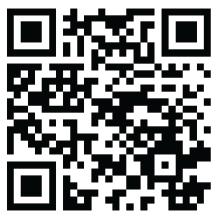
Helping my device and monitor patients. It’s very overwhelming getting a pacemaker, ICD, or loop recorder implanted. Helping them understand what to expect, how we monitor their device remotely, and how it all works. Answering questions so they feel at ease and understand what the device is doing for them is rewarding.
Why did you want to work in healthcare?
My mom and several aunts have all worked in healthcare. I remember listening to them talk about how they help patients and how much they loved what they did. I knew this was for me!
What’s something you wish people could know more about your profession? I would like people to know what devices can do, and how they make patients feel better. The technology is incredible. This little device, implanted and connected to their heart, can make patients feel better and not worry as much about their heart.
Anything else you want readers to know? I appreciate Pulse and everything they do for our patients and staff. Best place I have ever worked!

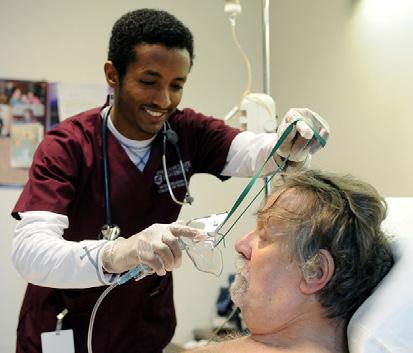

Annika, Facility Dog, Providence Sacred Heart Children’s Hospital
How long have you worked here?
Under one year
What do you like about where you work?
My presence is therapeutic and comforting for patients and caregivers. I collaborate with Child Life Specialists, an Art Therapist, a Music Therapist, an Activity Assistant and Family Care Coordinator who work together to support and champion children and families.
How long have you worked in health care?
This is my first year at Sacred Heart Children’s Hospital. However, I completed years of training to perfect my skills and participate in ongoing training with my handler Laura.

Libby Fox, Respiratory Care Manager, Providence Mount Carmel Hospital & Providence St Joseph’s Hospital
How long have you worked here? 11 years
How long have you worked in health care?
I began as an EMT for the Stevens County Sheriff’s Ambulance in 2005, so almost 20 years.
What do you like most about what you do?
The ability to make an immediate and significant impact on patients’ lives. Whether it’s helping someone breathe easier during a critical moment or supporting long-term respiratory health, the work is incredibly rewarding. I also appreciate the close
Where did you study?
Canine Companions, an organization that provides highly-trained service dogs at no charge to the recipient.
What do you like most about what you do?
My handler Laura and I work in an amazing department. I do not say this lightly, but I know that every day Laura and I make a difference in the lives of children and their families as they navigate difficult medical experiences. We provide education, advocacy, comfort, distraction, normalization, and support.
Why did you want to work in health care?
I love making a difference in kids’ lives. My job is to be a source of comfort, a steady presence, and sometimes a bit of a hero. When children feel scared or lonely, I know that a cuddle or a wag can brighten their day.
Anything else you want readers to know?
I am so thankful for the Providence Inland Northwest Foundation for supporting me and my handler’s training, allowing us to do the work we do.

Darrell Bryant, Manager, Respiratory Therapy and Sleep Center, Providence St. Luke’s Rehabilitation Medical Center
How long have you worked here? 6.5 years
What do you like about where you work?
St. Luke’s is a family. It is small enough that you can get to know everyone .
How long have you worked in health care?
30+ years
Where did you study?
Initially I studied respiratory therapy at the U.S. Army Academy of Health Sciences. I recently received my BSRT from St. Louis College for Health Careers.
What do you like most about what you do?
I enjoy changing lives and helping people move forward in their journey.
Why did you want to work in health care?
I wanted to help people and researched healthcare and respiratory specifically.
What’s something you wish people could know more about your profession?
We are often unknown in larger facilities, but we are one of the first to be called when there is a medical emergency. Many of us have given the first breath to a newborn and removed ventilator support at the end of a life. We are often not seen, but our work is felt by many.
Anything else you want readers to know?
Respiratory therapy is one of the greatest professions in healthcare.
relationships with patients and their families, offering not just care, but comfort and reassurance. Working alongside a dedicated team of healthcare professionals who share a passion for patient care makes every day fulfilling and inspiring.
Why did you want to work in health care?
After having my son who lives with special needs in 2002 and helping him with breathing issues, I felt inspired to give back. I remember when he was admitted to Providence Sacred Heart Children’s Hospital for a bad cough, the Respiratory Therapists would quietly come into his room at night to give him breathing treatments without waking him. I was amazed at how they were like the stealthy heroes of the hospital and I knew I wanted to be just like them.
What’s something you wish people could know more about your profession?
Choosing a career in Respiratory Therapy offers the opportunity to make a difference in people’s lives, particularly those with breathing difficulties. The field is in high demand, offering job stability, diverse work environments, and continuous opportunities for learning and growth.

Marina Viskova, Environmental Services Technician (Housekeeping), Providence Sacred Heart Medical Center Birthplace
How long have you worked here?
17 years. I came into our hospital to have a baby and have never left!
What do you like about where you work?
Providence is a good company, and my role is essential. This type of work is hard but extremely rewarding when you see new mothers holding their babies.
What do you like most about what you do?
I have always enjoyed cleaning from start to finish. I love to stand back and look over the finished room and I feel accomplished.
Why did you want to work in health care?
At the time I had not been in the U.S. long and I was not sure where I would work. Providence hired me and it has been a wonderful experience. I have made lifelong friends and gained extended family working here. Healthcare is a type of job that no matter what level you come in at you are needed because it takes all of us to get the job done.
What is something you wish people could know more about your profession?
EVS (Environmental Services) is not just about cleaning, it is about making sure you and your family are safe from diseases and other harmful germs. Eventually, we all will seek medical attention, and rest assured we are here to make it safe for you and your family. The staff here at this hospital enjoys serving the public.

By Tracy Damon Marketing Correspondent
“People who are in the hospital are not having a good day. And unfortunately, they take it out on our caregivers,” said Patrick McKenna, K9 supervisor for Providence Sacred Heart/Holy Family. “Medical staff are the second most-assaulted profession in the United States.”
Doctors, nurses, and other healthcare workers are right behind law enforcement when it comes to workplace violence. At Providence Sacred Heart, assaults on staff from patients and hospital visitors come
in the form of kicks, punches, bites, hair pulling, and strangulation, according to Devin Yates, Senior Education Program Coordinator, also at Providence.
“We have to teach caregivers to defend themselves… That’s why I teach Providence’s 6,200 caregivers how to protect themselves.”
Providence staffers from area facilitiesincluding Sacred Heart Medical Center, St. Luke’s Rehabilitation Medical Center, Providence Holy Family Hospital and regional clinics in communities such as
Chewelah and Colville- take either four- or eight-hour self-defense courses from Yates.
“A lot of caregivers go through (this training) annually so they’re prepared for anything that comes their way,” said Yates.
Even better than being prepared to react to an attack is being proactive in preventing attacks. This is where Yates’ co-worker, McKenna, comes in. McKenna and other Providence K9 handlers, along with their dogs, have proven to be an impressive tool in preventing injuries to both healthcare workers and security officers.
“We were getting officers injured almost all the time,” said McKenna of the years prior to the start of the K9 program in 2018.
“We’d run about four or five fights a day with our officers.”
Providence’s CEO at the time, Peg Currie, looked into ways to address this. Some possible solutions were arming security guards, which she was not supportive of, or adding metal detectors at every entrance to each Providence facility.
With 30-plus entrances at Providence Sacred Heart alone, that expense would
have been astronomical. Currie found a more cost-effective solution when she toured a K9 program in Loma Linda, Calif., and decided to replicate the program at Sacred Heart, making it the first hospital K9 program of its’ kind in Washington. At the same time, McKenna retired from a law enforcement career that included working with K9s but moved to Spokane to run the new program.
Six years later, the dogs are both ambassadors and bodyguards. The three dogs currently on staff are German Shepherds. K9 Sarge is handled by McKenna, Duke’s handler is Jereme Dawe, and Rosie, short for Rosalie, is handled by Rachel Adams. Rosie was named after Sister Rosalie Locati who served as a Sister of Providence for 60 years, retiring in 2022.
The dogs are extremely effective at de-escalating potentially violent situations with just their presence. McKenna says that in a hospital setting, security officers deal with everything from domestic violence to custody battles, to overdose victims that are combative, to people who go to the hospital specifically looking for prescription medications.
“We run the whole spectrum,” he said. “The most fights we get in the hospital are the people who come in drug seeking.”
After doctors tell these patients they can’t or won’t write them a prescription, patients often become aggressive and refuse to leave without medication. In those cases, simply bringing in an officer with a K9 can defuse the situation.
“When a dog rolls in, they’re done (fighting),” said McKenna, due to the threat of being bitten by a K9.
Despite their tough appearance though, dogs in McKenna’s program have never bitten anyone.
“We’re right at 5,000 deployments of our dogs since 2018 and we have zero bites,” he said. “The national acceptance rate (for K9 bites) is 10 percent.”
On a typical day, a Providence dog will be deployed approximately five times. A deployment is considered anything from responding to a threat or attack to simply
walking a dog through an area where a patient or visitor is acting suspiciously in order to discourage misconduct.
While the dogs have a subduing effect on possible offenders, they have warmed healthcare staff to the presence of security personnel. McKenna says there wasn’t a lot of interaction between caregivers and security prior to the K9 program. Now they are greeted warmly and receive a lot of questions about the dogs, as well as compliments.
“We had a nurse dealing with an unruly elderly gentleman… it was dealt with and we walked out and the doctor said, ‘You know, we really love you guys.’”
The dogs are making an impression with non-staff members as well. Each has its’ own trading card and sticker.
“Just this morning I came on at 7 a.m. and I’ve already gone through 10 stickers and trading cards for the kids. It gives them that moment with the dog,” McKenna said of their interactions with young patients

and hospital visitors.
While these dogs are celebrities at work, at home where they live with their handlers, they are just like other pets.
“He’s got lots of toys at home,” McKenna said of Sarge. “His favorite is a stuffed shark. We call it Woobie.”
Funded by the Providence Inland Northwest Foundation, the fundraising arm of the six Providence hospitals in Spokane and Stevens counties, each dog will work between eight and 10 years or until its’ handler retires. And just like all employees, they need time to decompress after a tough day on the job.
“Sarge will be on a leather couch by four this afternoon taking a nap,” said McKenna. “He’s part of the family.”
Providence
and their dogs.





Clint Hastings, Licensed Orthotist/ Prosthetist, Shriner’s Children’s Spokane
How long have you worked here?
9 years
What do you like about where you work?
Shriners Children’s Spokane is a wonderful employer to work for. This organization truly empowers me to treat all kids regardless of their living situation. I get the opportunity to work with great kids, families and colleagues within the hospital.
How long have you worked in health care?
16 years
Where did you study?
Undergraduate degree in Health Sciences from the University of Iowa, graduate degree in Orthotics/Prosthetics from Northwestern University.

Katie Dickeson, BSN, RN, TB Program Coordinator, Spokane Regional Health District
What do you like about where you work?
The diversity of people I get to meet and work with every day
How long have you worked in public health?
12 years
What do you like most about what you do?
Individuals get referred to our program who’ve been diagnosed with tuberculosis. Most are sick, scared, and unsure of their diagnosis. It’s special to be able to build a relationship where they trust you to help them get through 6, 9, even 12 months of treatment and be cured. Most of our work is done by delivering medications and case management activities to their home. It
What do you like most about what you do?
I love the blend of art and science necessary to have successful outcomes in the orthotic and prosthetic industry. There is a nice balance between fabrication and clinical application. I get the opportunity to be creative, designing many types of devices which help enable kids to reach their potential while improving their daily functional capabilities. It’s truly a rewarding profession.
Why did you want to work in health care?
I simply enjoy helping people and playing a positive role in other peoples’ lives. There is great fulfillment in the work we do here.
What’s something you wish people could know more about your profession?
I always like to say that we help less than 1% of the population, but these kids do exist, and we are here to simply help them navigate the challenges they may face daily.
gives us a chance to make sure everyone is healthy but also the opportunity to address other community members who might need screening based on potential exposure.
Why did you want to work in public health?
While in Alaska I was able to travel to several remote villages with a public health nurse. We worked with tribal health care clinics to identify individuals who needed immunizations, STD screening, TB testing, and well-child exams for newborns. Once I saw the dedication and passion that the nurse had in delivering education and prevention to those who can’t access health care, I knew public health nursing was where I wanted to build my career.
What do you wish people could know more about?
Take a look into the many roles that help protect and improve the health of people and communities. Public health is successful when there are interventions and policies that support individuals but also bring agencies together, from local healthcare to schools to governmental agencies.
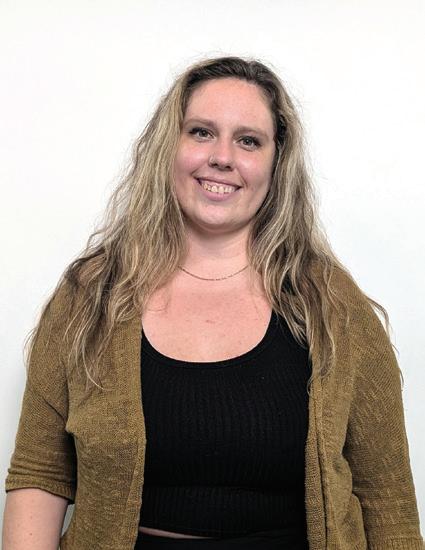
Hailey Clawson, Health Program Specialist/ Housing Coordinator, Spokane Regional Health District
How long have you worked here?
Almost 3.5 years
What do you like about where you work?
Watching people flourish when they have stable housing is incredibly rewarding. I enjoy being able to create a safe space for folks to be themselves and talk candidly about their struggles, worries, and hopes.
What do you like most about what you do?
Housing is a fundamental human right, and our system is deliberately difficult for people to navigate. I appreciate being an advocate and ally in people’s journey for stable housing. Working within medical case management is rewarding because we get to support people in achieving their health goals and managing complex symptoms and systems.

Katie Swain RN, BSN, COHN-Sm Occupational Health/Infection Prevention Nurse, Shriners Children’s Spokane
Why did you want to work in public health?
After learning more about the mission and values of public health I realized they aligned closely with my own. I believe in service, community support, and for everyone to have the best chance of living their healthiest, safest life.
What’s something you wish people could know more about your profession?
Our collective public health is threatened by homelessness and housing instability. Substandard housing affects many dimensions of health. For people with HIV, housing is the greatest unmet need, while being one of the largest stabilizing factors in a person living with HIV’s ability to manage their condition.
Anything else you want readers to know?
My team gets to see people living with HIV achieve and maintain an undetectable viral load. When this is achieved, a person cannot sexually transmit HIV to others. This also means that as the number of people living with HIV who achieve viral suppression increases, new transmissions decrease.
How long have you worked in health care? 25 years
Where did you study?
I earned my Bachelor of Science in Nursing at the University of Portland where I was part of ROTC, and served as a nurse in the Air Force.
What do you like most about what you do?
The opportunity to interact with people throughout the organization. I enjoy talking with people from all walks of life.
Why did you want to work in health care?
I joined the Mount Spokane Ski Patrol in high school and had the opportunity to serve the first-aid needs of the local ski
community alongside other volunteers, many in healthcare. This was my first real “grown up” glimpse into healthcare. When looking at colleges, nursing provided opportunities to work in a variety of environments, build on previous experiences, and work with a range of people.
What’s something you wish people could know more about nursing?
Many don’t realize nurses have so many employment opportunities and areas to specialize in. Many pursue board certifications to demonstrate expertise in a specific area. I want people to recognize the multitude of places they may encounter a nurse and how much value, expertise, and perspective nurses provide. I have been fortunate to work in clinics, hospitals, factories, even a camp. The possibilities continue to grow!
This year Shriners Children’s Spokane is celebrating 100 years! The delivery of innovative, time-sensitive, specialized care is something I am proud to be a part of. I had driven by the big building for years and didn’t grasp the scope of work that occurs behind the giant glass windows!
By Tracy Damon Marketing Correspondent
It’s been coming for years: the shortage of healthcare providers we’ve been hearing about is becoming more noticeable when it’s time to make an appointment to see a primary provider or a specialist. Many area doctors are booking appointments months out due to high demand and low staffing numbers.
The National Center for Health Workforce Analysis says that as of November 2023, approximately 102 million Americans live in a primary care Health Professional Shortage Area (HPSA), 77 million live in a dental health HPSA, and 167 million people live in a mental health HPSA. As is often the case, the most impacted populations are in rural areas.
Healthcare worker shortages are being attributed to multiple factors. The United States’ aging population means that more people are needed to provide care for senior citizens even while many care providers are reaching retirement age themselves. With the average age of registered nurses being in the mid-40s and close to half of all physicians being age 55 or older, the shortage will be compounded.
The HRSA projects a shortage of 139,940 physicians, 23,320 dental hygienists, and 8,790 dentists by 2036.
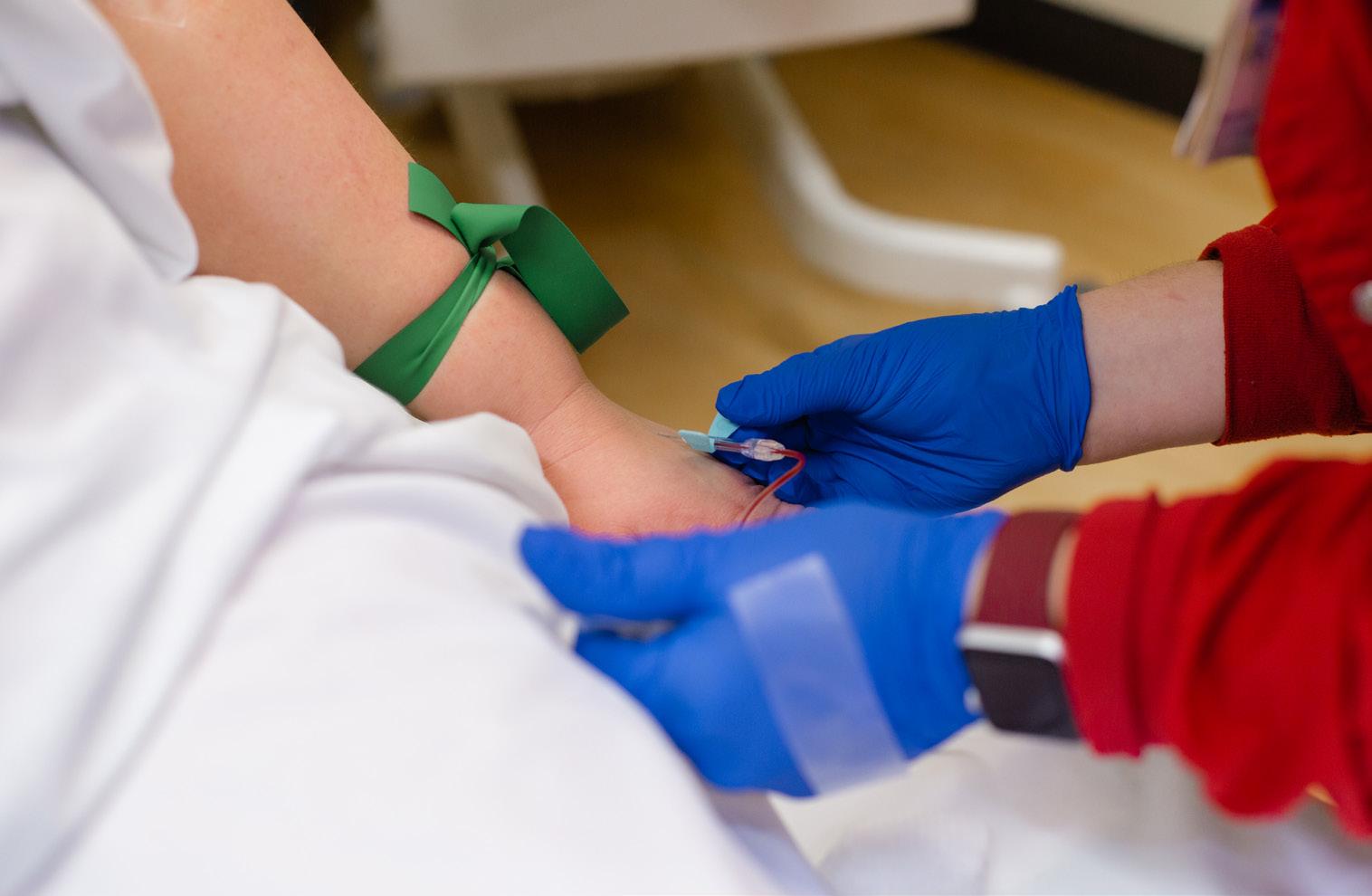
A rise in chronic diseases, behavioral health conditions, and mental burnout can all play a role in the healthcare worker shortage, according to the American Hospital Association (AHA). In particular, the AHA says primary care physicians and specialty areas including neu-rology, radiology, pathology, and psychiatry will see some of the most pronounced short-ages in coming years.
In addition to filling current open positions, the Bureau of Labor Statistics (BLS) projects that employment in the healthcare industry will grow by about 2 million jobs by 2031. The BLS says employment of both registered nurses and pharmacy technicians will grow 6 percent between now and 2032.
Employment of audiologists is projected to grow 11 percent in that timeframe and overall employment of physicians and surgeons is projected to grow 3 percent. While our health workforce faces a number of challenges, there are also signs that reinforcements are coming; medical school enrollment increased nearly 6% between 2018 and 2023 (with an increase of 15% in female medical students) and the number of newly licensed registered nurses increased each year from 2018 to 2022 by 18% according to BLS.
Photos courtesy Kootenai Health


growing area of interest for healthcare workers
By Tracy Damon Marketing Correspondent
While many areas of the healthcare industry are seeing a lack of candidates to fill open positions, staff at the Spokane Regional Health District say they’re seeing a renewed interest in public health employment.
“The opportunity to give back to the community is something that connects applicants to what we do,” said Danielle Stoddard, SRHD Human Resources Director. “That's a really vital piece (of the hiring process).”
Stoddard says the healthcare worker shortage isn’t noticeable for the most part at SRHD except when it comes to hiring nurses or nursing managers.
“The (nursing) professional itself has had a lot of turnover and change,” she said. “When we have positions open up we don't have the amount of applicants I would have expected.”
Stoddard doesn’t believe this has impacted SRHD’s ability to meet their clients’ needs however.
“We have adapted. During COVID we offered telehealth appointments but we find that face to face is better,” she said. “In public health we’re helping people get access to healthcare whether that’s with us or with community partners… We're trying really hard to get everyone's needs met.”
Stoddard describes SRHD staff as “liaisons” between people in need of care and the many community groups that provide those services, especially when it comes to people disproportionately impacted by things like extreme summer temperatures, wildfire smoke, and even factors like lack of sidewalks that make it a challenge for some to access healthcare facilities or other services.
It’s being able to tackle these kinds of challenges that draws many people to public health, according to Stoddard, and SRHD management sets them up for success and to make a difference.
“It’s a really great career and we make sure when we’re bringing on new employees into these professions that their learning curve is not steep,” she said.
Stoddard points out that SRHD has some selling points when it comes to that other employers may not be able to offer.
“In public health we don’t work weekends or evenings… we have a pension here at the District,” she said. “So there are things we have done to be competitive. We have a 37.5 hour work week. There are some perks at the District that are pretty unique. Moms and dads can bring in babies up to 6 months old.”
SRHD has also had success utilizing the many nursing and medical students in the area. The district partners with regional colleges, including Washington State University, Gonzaga University, Whitworth University, and Eastern Washington University to provide an opportunity for medical and nursing students to work in their clinics. This gives students experience and a taste for working in public health while also providing a labor pool for SRHD and potential future employees.
“We bring in students several times a year,” said Stoddard. “Right now we have 10 (students) and it looks like next month we can add 12 more.”
Outside of healthcare, SRHD’s IT department gets a lot of interest and job applicants and the district is seeing increased support from legislators, particularly in areas like communications.
“There’s a lot of districts in the state that didn’t even have Communications staff,” said SRHD Director of Public Information and Government Affairs Kelli Hawkins. “We found out from the pandemic that if something like this happens again, they need to be ready to go to get information out.”
Whether in a care provider or support role, Hawkins and Stoddard both say a sense of job satisfaction and doing something they believe in has brought many people to the public health field in recent years.
“I truly do believe that it's really rewarding,” said Stoddard. “We have wonderful programs aimed at helping our community... We have the ability to reach out and connect.”













and Your
Our staff is expertly trained & certified in prescription compounding and we are ready to serve you in our state of the art facility at our new location!


• Custom Compounding for People & Pets
• Flavor & Dosage Form options for veterinary prescriptions
• Bio-Identical Hormones
• Customized Preservative-Free, Dye-Free and Allergen-Free Products
• Low-Dose Naltrexone
• Hormone Consultations
• Nutrition Counseling for Wellness, Weight Loss & Athletic Performance
• Professional Grade Supplements Including: Thorne, Ortho Molecular, Metagenics, Design for Health, Pure Encapsulations, Integrative Therapeutics






